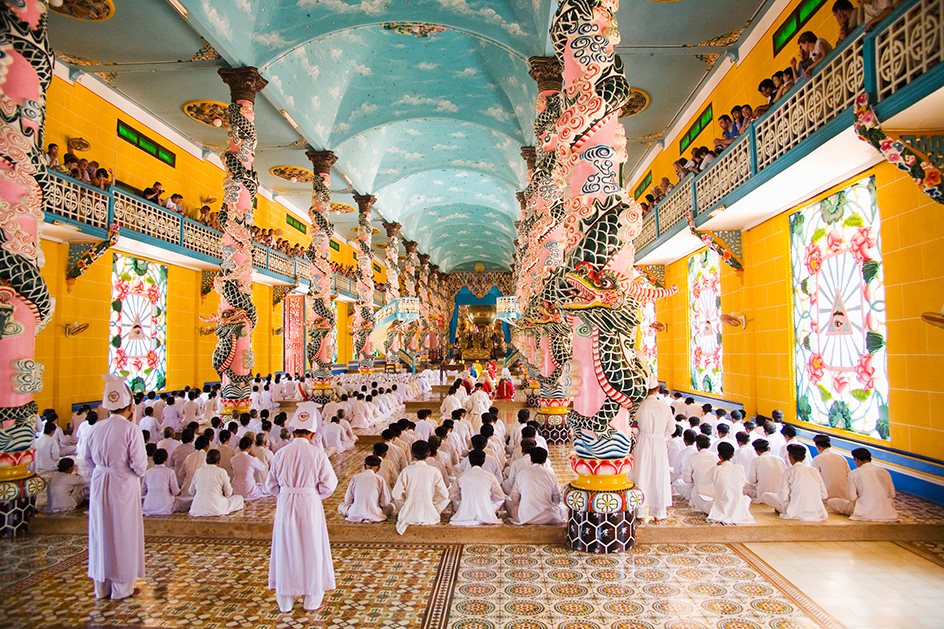Caodaism, << KOW dy ihz uhm, >> also known as Cao Dai, is a religion that combines the Asian traditions of Buddhism, Confucianism, and Taoism with elements of Christianity, Islam, and Judaism to form a broader spiritual tradition. It is officially known as the Great Way of the Third Age of Revelations. Followers of Caodaism worship a Supreme God called Cao Dai, which is Vietnamese for high tower.

Caodaism was established in Vietnam in 1926, when Vietnam was a French colony. According to the religion’s tradition, Vietnamese intellectuals in Saigon (now Ho Chi Minh City) received Caodaist teachings while communicating with spirits at gatherings known as séances. These intellectuals had grown up with such traditional religious practices as ancestor worship and meditation. However, they also had been educated in French and become aware of other forms of spirituality. Thus, Caodaism is rooted in Asian spirituality but also teaches religious tolerance and multiculturalism. Its chief symbol is an eye that represents the left eye of God.
Within a decade of its founding, Caodaism had become the third largest religion of Vietnam, and more than 1,000 Caodaist temples had been established throughout southern and central Vietnam. Today, there are several million followers of Caodaism. The city of Tay Ninh is the sacred center of Caodaism, and the vast majority of Caodaists live in Vietnam. However, there are also congregations of considerable size in other countries, including Australia, Cambodia, Canada, France, and the United States.
In French colonial times, Caodaism expressed a desire to heal the wounds of colonialism by bringing together Asian and European religious traditions. Since then, Caodaism has become identified with the regional culture of southern Vietnam and the nationalism of Vietnamese living in exile.
